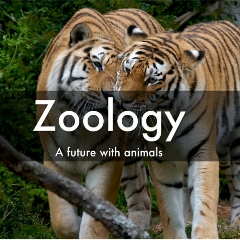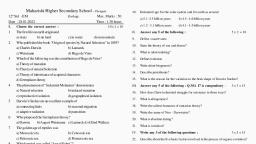Page 1 :
The origin of the reptiles:The origin of the reptiles lies about 310–320 million years ago, in the steaming swamps of the, late Carboniferous period, when the first reptiles evolved from advanced reptiliomorphs., The oldest known animal that may have been an amniote is Casineria (though it may have been, a temnospondyl). A series of footprints from the fossil strata of Nova Scotia dated to 315 Ma, show typical reptilian toes and imprints of scales.These tracks are attributed to Hylonomus, the, oldest unquestionable reptile known. It was a small, lizard-like animal, about 20 to 30, centimetres (7.9 to 11.8 in) long, with numerous sharp teeth indicating an insectivorous diet., Other examples include Westlothiana (for the moment considered a reptiliomorph rather than a, true amniote)and Paleothyris, both of similar build and presumably similar habit., However, microsaurs have been at times considered true reptiles, so an earlier origin is, possiblle., Rise of the reptiles :The earliest amniotes, including stem-reptiles (those amniotes closer to modern reptiles than to, mammals), were largely overshadowed by larger stem-tetrapods, such as Cochleosaurus, and, remained a small, inconspicuous part of the fauna until the Carboniferous Rainforest, Collapse.This sudden collapse affected several large groups. Primitive tetrapods were, particularly devastated, while stem-reptiles fared better, being ecologically adapted to the drier, conditions that followed. Primitive tetrapods, like modern amphibians, need to return to water to, lay eggs; in contrast, amniotes, like modern reptiles – whose eggs possess a shell that allows, them to be laid on land – were better adapted to the new conditions. Amniotes acquired new, niches at a faster rate than before the collapse and at a much faster rate than primitive, tetrapods. They acquired new feeding strategies including herbivory and carnivory, previously, only having been insectivores and piscivores.From this point forward, reptiles dominated, communities and had a greater diversity than primitive tetrapods, setting the stage for the, Mesozoic (known as the Age of Reptiles).One of the best known early stem-reptiles is, Mesosaurus, a genus from the Early Permian that had returned to water, feeding on fish., A 2021 examination of reptile diversity in the Carboniferous and Permian suggests a much, higher degree of diversity than previously thought, comparable or even exceeding that of, synapsids. Thus, the "First Age of Reptiles" was proposed., It was traditionally assumed that the first reptiles retained an anapsid skull inherited from their, ancestors. This type of skull has a skull roof with only holes for the nostrils, eyes and a pineal, eye. The discoveries of synapsid-like openings (see below) in the skull roof of the skulls of, several members of Parareptilia (the clade containing most of the amniotes traditionally referred, to as "anapsids"), including lanthanosuchoids, millerettids, bolosaurids, some nycteroleterids,, some procolophonoids and at least some mesosaurs made it more ambiguous and it's currently, uncertain whether the ancestral amniote had an anapsid-like or synapsid-like skull. These, animals are traditionally referred to as "anapsids", and form a paraphyletic basic stock from, which other groups evolved. Very shortly after the first amniotes appeared, a lineage called, Synapsida split off; this group was characterized by a temporal opening in the skull behind each, eye to give room for the jaw muscle to move. These are the "mammal-like amniotes", or, stem-mammals, that later gave rise to the true mammals.Soon after, another group evolved a, similar trait, this time with a double opening behind each eye, earning them the name Diapsida
Page 2 :
("two arches"). The function of the holes in these groups was to lighten the skull and give room, for the jaw muscles to move, allowing for a more powerful bite., Turtles have been traditionally believed to be surviving parareptiles, on the basis of their, anapsid skull structure, which was assumed to be primitive trait. The rationale for this, classification has been disputed, with some arguing that turtles are diapsids that evolved, anapsid skulls in order to improve their armor.Later morphological phylogenetic studies with this, in mind placed turtles firmly within Diapsida. All molecular studies have strongly upheld the, placement of turtles within diapsids, most commonly as a sister group to extant archosaurs., Permian Reptiles:With the close of the Carboniferous, the amniotes became the dominant tetrapod fauna. While, primitive, terrestrial reptiliomorphs still existed, the synapsid amniotes evolved the first truly, terrestrial megafauna (giant animals) in the form of pelycosaurs, such as Edaphosaurus and the, carnivorous Dimetrodon. In the mid-Permian period, the climate became drier, resulting in a, change of fauna: The pelycosaurs were replaced by the therapsids., The parareptiles, whose massive skull roofs had no postorbital holes, continued and flourished, throughout the Permian. The pareiasaurian parareptiles reached giant proportions in the late, Permian, eventually disappearing at the close of the period (the turtles being possible, survivors)., Early in the period, the modern reptiles, or crown-group reptiles, evolved and split into two main, lineages: the Archosauromorpha (forebears of turtles, crocodiles, and dinosaurs) and the, Lepidosauromorpha (predecessors of modern lizards and tuataras). Both groups remained, lizard-like and relatively small and inconspicuous during the Permian., Mesozoic Reptiles:The close of the Permian saw the greatest mass extinction known (see the Permian–Triassic, extinction event), an event prolonged by the combination of two or more distinct extinction, pulses. Most of the earlier parareptile and synapsid megafauna disappeared, being replaced by, the true reptiles, particularly archosauromorphs. These were characterized by elongated hind, legs and an erect pose, the early forms looking somewhat like long-legged crocodiles. The, archosaurs became the dominant group during the Triassic period, though it took 30 million, years before their diversity was as great as the animals that lived in the Permian. Archosaurs, developed into the well-known dinosaurs and pterosaurs, as well as the ancestors of crocodiles., Since reptiles, first rauisuchians and then dinosaurs, dominated the Mesozoic era, the interval is, popularly known as the "Age of Reptiles". The dinosaurs also developed smaller forms,, including the feather-bearing smaller theropods. In the Cretaceous period, these gave rise to the, first true birds., The sister group to Archosauromorpha is Lepidosauromorpha, containing lizards and tuataras,, as well as their fossil relatives. Lepidosauromorpha contained at least one major group of the, Mesozoic sea reptiles: the mosasaurs, which lived during the Cretaceous period. The, phylogenetic placement of other main groups of fossil sea reptiles – the ichthyopterygians, (including ichthyosaurs) and the sauropterygians, which evolved in the early Triassic – is more
Page 3 :
controversial. Different authors linked these groups either to lepidosauromorphs or to, archosauromorphs, and ichthyopterygians were also argued to be diapsids that did not belong, to the least inclusive clade containing lepidosauromorphs and archosauromorphs., Cenozoic Reptiles:The close of the Cretaceous period saw the demise of the Mesozoic era reptilian megafauna ., Of the large marine reptiles, only sea turtles were left; and of the non-marine large reptiles, only, the semi-aquatic crocodiles and broadly similar choristoderes survived the extinction, with last, members of the latter, the lizard-like Lazarussuchus, becoming extinct in the Miocene. Of the, great host of dinosaurs dominating the Mesozoic, only the small beaked birds survived. This, dramatic extinction pattern at the end of the Mesozoic led into the Cenozoic. Mammals and, birds filled the empty niches left behind by the reptilian megafauna and, while reptile, diversification slowed, bird and mammal diversification took an exponential turn. However,, reptiles were still important components of the megafauna, particularly in the form of large and, giant tortoises., After the extinction of most archosaur and marine reptile lines by the end of the Cretaceous,, reptile diversification continued throughout the Cenozoic. Squamates took a massive hit during, the K–Pg event, only recovering ten million years after it, but they underwent a great radiation, event once they recovered, and today squamates make up the majority of living reptiles (>, 95%). Approximately 10,000 extant species of traditional reptiles are known, with birds adding, about 10,000 more, almost twice the number of mammals, represented by about 5,700 living, species (excluding domesticated species).












































